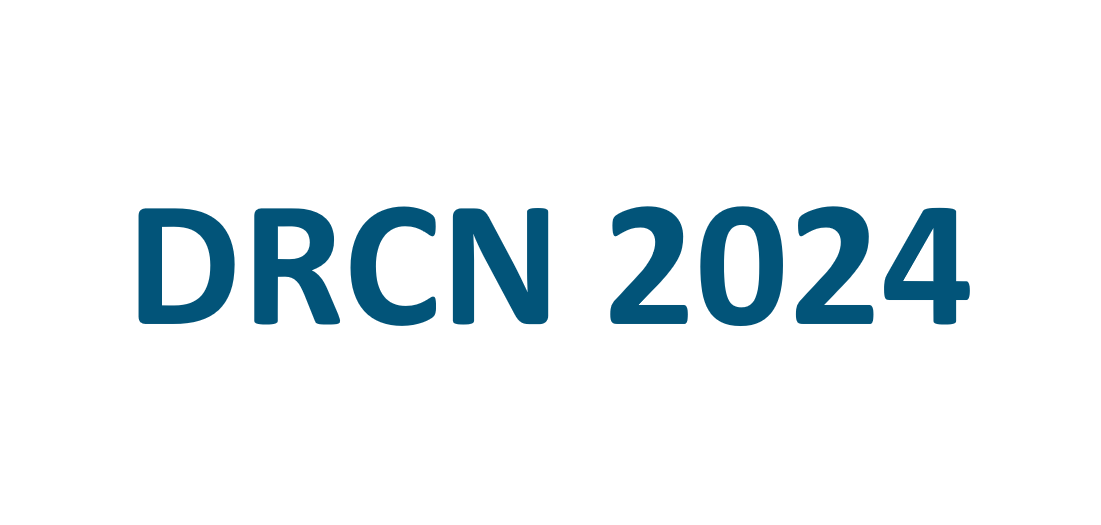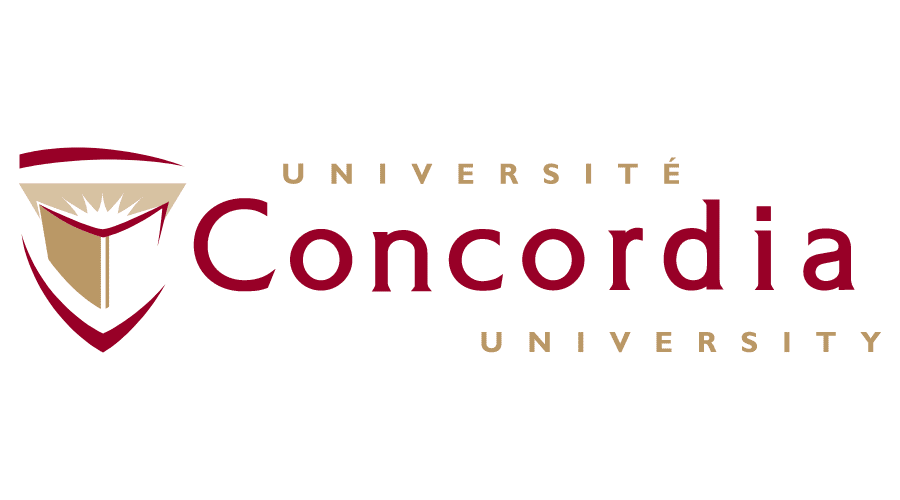

Prof. dr. Ir. Piet Van Mieghem
Delft University of Technology, Netherlands. Faculty of EEMCS, Section NAS https://www.nas.ewi.tudelft.nl/people/Piet
A Framework for Robustness-Resilience of Network
One of the major difficulties in the science of robustness/resilience of networks is the lack of a precise definition that allows us to compute the degree of robustness R in a network. After discussing briefly why a “computable definition” of network robustness is so difficult, we will assume that the robustness R of a network can be computed. Network challenges, both intentional (attacks) and unintentional (failures), can be described by the concept of a robustness envelope, which we will explain. It may serve both the attacker as well as the network operator. The last part will focus on a realistic scenario, where first a network is attacked, followed by a network recovery phase

Dr. Halim Yanikomeroglu
Dr. Halim Yanikomeroglu has been with the Department Systems and Computer Engineering at Carleton University (Ottawa, Canada) since 1998, where he is currently a Chancellor’s Professor. He received the BSc degree from the Middle East Technical University (Turkiye) and the MASc & PhD degrees from the University of Toronto. His research interests cover many aspects of wireless communications and networks, with a special emphasis on non-terrestrial networks (NTN) in recent years. He has supervised or hosted over 165 postgraduate researchers in his lab at Carleton. Dr. Yanikomeroglu has coauthored ~650 peer-reviewed research papers including 300+ papers in 30 different IEEE journals. His extensive collaborative research with industry resulted in 40 granted patents. Dr. Yanikomeroglu is a Fellow of the IEEE, the Engineering Institute of Canada (EIC), the Canadian Academy of Engineering (CAE), and the Asia-Pacific Artificial Intelligence Association (AAIA). He is a Distinguished Speaker for the IEEE Communications Society and the IEEE Vehicular Technology Society, and an Expert Panelist of the Council of Canadian Academies (CCA). Dr. Yanikomeroglu is currently serving as the Chair of the Steering Committee of IEEE’s flagship wireless event, Wireless Communications and Networking Conference (WCNC). He is also a member of the IEEE ComSoc Governance Council, IEEE ComSoc Globecom/ICC Management & Strategy (GIMS) Standing Committee, IEEE ComSoc Conference Council, and IEEE PIMRC Steering Committee. He served as the General Chair and Technical Program Chair of several IEEE conferences. He has also served in the editorial boards of various IEEE periodicals. Dr. Yanikomeroglu received several awards for his research, teaching, and service, including the IEEE ComSoc Satellite Communications Technical Recognition Award (2023), IEEE ComSoc Fred W. Ellersick Prize (2021), IEEE VTS Stuart Meyer Memorial Award (2020), and IEEE ComSoc Wireless Communications TC Recognition Award (2018). He received best paper awards at IEEE Competition on Non-Terrestrial Networks for B5G and 6G in 2022 (grand prize), IEEE ICC 2021, IEEE WISEE 2021 and 2022.
The Disruptive Side of 6G: NTN (Non-Terrestrial Networks)
The research community has been discussing the potential 6G technologies and paradigms for the last several years. This discussion has become more tangible with the issuance of the “IMT-2030 (a.k.a. 6G) Framework” document by ITU in June 2023 and the subsequent WRC-23 in November/December 2023 (IMT: International Mobile Telecommunications; ITU-R: International Telecommunications Union – Radiocommunication Sector; WRC: World Radiocommunication Conference). The IMT-2030 Framework comes in two flavors, “enhanced capabilities” as well as “new capabilities”. While the former refers to the legacy key performance indicators (such as peak data rate, latency, connection density, mobility, and reliability), the latter refers to a number of new paradigms, such as coverage, sensing, sustainability, interoperability, and positioning. Almost all of these new capabilities can be read as NTN (non-terrestrial networks). The NTN (non-terrestrial networks) expression has been used to refer to the satellite communications paradigm almost exclusively until recently. It is now increasingly acknowledged that within NTN, there are separate paradigms with their own special dynamics: LEO (low Earth orbit) satellites in space, HAPS (high altitude platform stations) in stratosphere/near-space, and UAS (uncrewed aerial systems) in air. NTN will arguably be one of the most prominent and disruptive aspects of 6G. The NTN discussion will continue throughout the 2030s and will likely remain to be among the big-ticket items in the 7G discussions as well.

Dr. Ashraf Matrawy
Dr. Ashraf Matrawy is a Professor at the School of Information Technology, Carleton University. He is a senior member of the IEEE and licensed Professional Engineer in Ontraio. He leads the Next Generation Networks Group at Carleton. He served as a Network co-Investigator of Smart Cybersecurity Network (SERENE-RISC) in Canada. His research interests include AI for network security and reliable and secure computer networking. Dr. Matrawy has won multiple awards for his contributions to network security research and education. He served as associate director for the School of Information Technology for three and a half years. In addition to his academic work, he worked and consulted for both Canadian Government and Industry including Industry Canada, TELUS Communications, and Irdeto.
Using Machine Learning in Network Security: A New Investigation of Adversarial Evasion Attacks
Applications of machine learning in network security face the threat of active adversarial attacks in what could be considered an arm’s race between attackers and defenders. Adversaries constantly probe machine learning systems with inputs which are explicitly designed to bypass the system and induce a wrong prediction. In the first part of this talk, we classify adversarial attacks in network security and introduce the problem space vs. feature space classification model. In the second part, we present our investigations into different defence methods against adversarial attacks to address difficulties in defending against these attacks, including the lack of labelled data, concept drift, and whether a general defence is possible. In the final part, we present our ongoing work into practicality of adversarial attacks against ML-based NIDS in-depth. We present three distinct contributions: identifying numerous practicality issues for evasion adversarial attacks on ML-NIDS using an attack tree threat model, introducing a taxonomy of practicality issues associated with adversarial attacks against ML-based NIDS, and investigating how the dynamicity of some real-world ML models affects adversarial attacks against NIDS. While adversarial attacks can compromise ML-based NIDSs, our aim is to highlight the significant gap between research and real-world practicality in this domain, warranting attention.

Dr. Soumaya Cherkaoui
Full Professor in the Department of Computer Engineering and Software Engineering at Polytechnique Montreal. Soumaya Cherkaoui is a Full Professor at Department of Computer and Software Engineering at Polytechnique Montréal, Canada. Her research interests are in wireless networks. Particularly, she works on Machine learning empowered next generation networks (B5G/6G), distributed edge intelligence, and communication networks for verticals such as connected vehicles, IoT, and IIoT. Before joining academia as a professor in 1999, she worked for industry as a project leader on projects targeted at the Aerospace Industry. Pr. Cherkaoui has published ~200 research papers in reputed journals and conferences. She has been a guest editor and a member of the editorial board of several IEEE, Wiley, and Elsevier Journals including IEEE JSAC, IEEE Network, IEEE Systems and Computer Networks. Her work resulted in technonolgy transfer and was awarded with recognitions and best paper awards including a best paper award at the IEEE Communications Society Flagship conference IEEE ICC in 2017. She has chaired prestigious conferences such as IEEE LCN 2019 and has served as as symposium co-chair for flagship conferences including IEEE ICC 2018, IEEE Globecom 2018, IEEE Globecom 2015 and IEEE ICC 2014. She was also Chair of the IEEE Communications Society Technical Committee on IoT-Ad hoc and Sensor Networks (2020-2021). Pr Cherkaoui is recipient of the Mirela Notere Award, the IEEE Bio-Inspired Computing STC Leadership Award, and was named "Star" in Networking and Communications by N2Women. She is a IEEE Communications Society Distinguished lecturer.
Navigating Future Horizons: Exploring the potential of Quantum Computing and Quantum Machine Learning in Communication Networks
Anticipated advancements in future 6G networks and beyond are expected to surpass the achievements of 5G, offering faster speeds, significantly reduced latency, and improved spectrum utilization for a broad range of transformative applications. Although still in the early stages of development and standardization, 6G is projected to introduce not only incremental improvements but also groundbreaking innovations compared to its predecessor, 5G. In parallel, quantum technologies, especially quantum computing, have made significant strides in the past 5 years, expanding computing capabilities, efficiency, and applications. As technical challenges are steadily addressed, the field is set to evolve rapidly, moving closer to the realization of quantum computing's transformative potential. With 6G networks and beyond primed to deeply integrate artificial intelligence (AI) and machine learning, the emergence of quantum computing and quantum machine learning (QML) offers exciting prospects. QML holds promise for quicker data processing, enhanced network optimization, and bolstered security and privacy. During this presentation, we will delve into the basics of quantum computing and quantum machine learning. We will examine how these technologies could influence the future of communication networks, potentially leading to radical advancements. Additionally, we will discuss the significant technical challenges involved in incorporating quantum computing and machine learning into future communication networks.

Dr. Jeremy Clark
Jeremy Clark is an associate professor at the Concordia Institute for Information Systems Engineering. At Concordia, he holds the NSERC/Raymond Chabot Grant Thornton/Catallaxy Industrial Research Chair in Blockchain Technologies. He obtained his PhD from the University of Waterloo, where his gold medal dissertation was on designing and deploying secure voting systems including Scantegrity—the first cryptographically verifiable system used in a public sector election. He wrote one of the earliest academic papers on Bitcoin, completed several research projects in the area, and contributed to the first textbook. Beyond research, he has worked with several municipalities on voting technology and testified to both the Canadian Senate and House finance committees on Bitcoin.
Understanding the Role of Peer-to-Peer Networks in Blockchain Technology
Blockchains are systems that provide robust and reliable financial transactions, as well as general computation. However blockchain technology requires robust networks to mitigate certain types of failures and attacks. In this talk, we will introduce how blockchains operate over a peer-to-peer network. We will then describe the assumptions a blockchain makes about the underlying network, and show examples of things that can go wrong when the network cannot provide certain guarantees around message delivery time, connectivity, reachability, and churn in active nodes.



